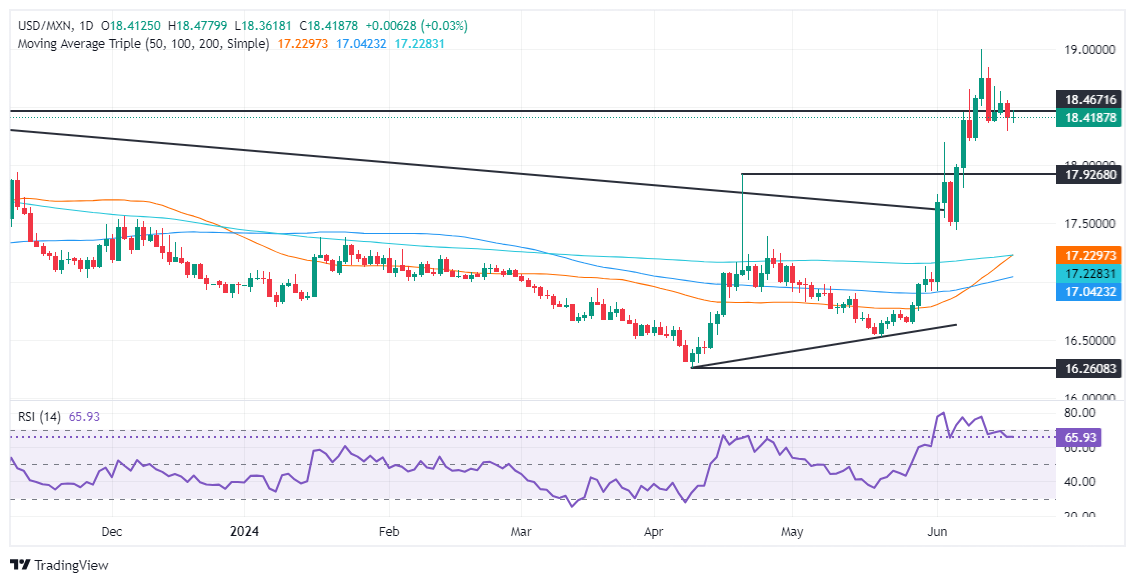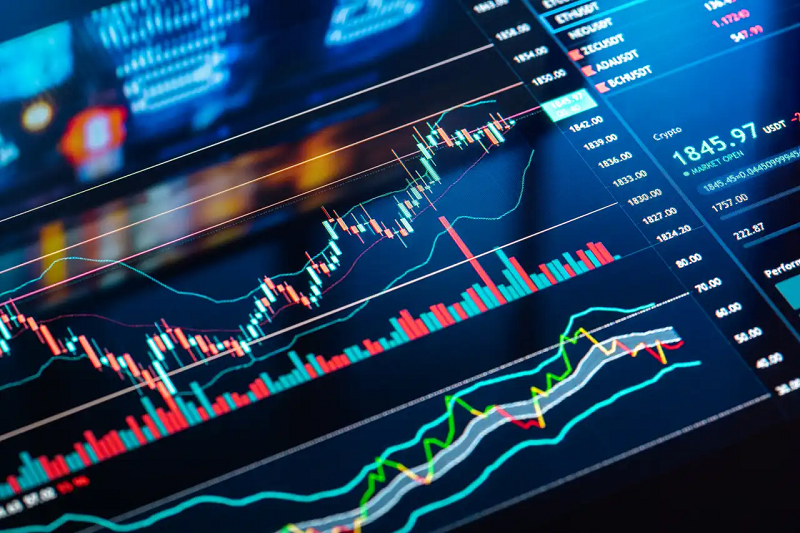Mexican Peso under strain as traders awake Retail Sales figures
- Mexican Peso edges down after recovering over the past five trading days, exchanging hands at 18.41 against the US Dollar.
- Political developments, including judiciary reform, weigh on sentiment, sparking flows out of the Peso.
- Fed officials maintain cautious stance on inflation, affecting market expectations on monetary policy.
The Mexican Peso registers minuscule losses versus the US Dollar on Wednesday after recovering some ground in the last five trading days. A scarce economic docket in Mexico and the United States (US) leaves the emerging market currency leaning on political developments. The USD/MXN trades at 18.41, up 0.08%.
Traders remain risk averse as European bourses finished Wednesday’s session with losses. The Greenback trades with losses against most G7 currencies while advancing against emerging market currencies.
Data from Mexico suggests the economy remains robust, while traders eye the release of April’s Retail Sales report. In the meantime, investors remain attentive to politics after President Andres Manuel Lopez Obrador (AMLO) reiterated that the judiciary reform would likely be approved in September.
On Monday, presumptive President Claudia Sheinbaum revealed a poll in which citizens approved a reform that allows the popular election of Supreme Court ministers, magistrates and judges. “These polls are information, they don't have another objective,” Sheinbaum said in a press conference. “This is just information to be considered in the discussions starting in the coming days.”
Aside from this, Federal Reserve officials remained cautious about inflation and the commencement of the easing cycle. Most considered inflation high, monetary policy appropriate, and the possibility of cutting rates once they gain confidence in the disinflation process.
Although policymakers are not considering a rate hike, St. Louis Fed President Alberto Musalem stated that if inflation stalls, he will favor an increase to the fed funds rate.
Despite that, the USD/MXN exchange rate would continue to be driven by political uncertainty as some of the reforms pushed by AMLO to change the Mexican Constitution threaten the state of law.
Daily digest market movers: Mexican Peso on defensive amid risk aversion
- Mexican Retail Sales are expected to decrease further, estimated at -0.3% MoM, worse than March’s -0.2% contraction. They are expected to jump from -1.7% to 1.5% for the twelve months to April.
- USD/MXN stabilizes following last week’s verbal intervention by Banxico Governor Victoria Rodriguez Ceja, who said the central bank is attentive to volatility in the Mexican currency exchange rate and could act to restore “order” in markets.
- Wednesday’s data and Mexican currency depreciation could deter Banxico from easing its policy at the next meeting on June 27. A rate cut could weaken the Mexican Peso and expose the USD/MXN year-to-date high at 18.99.
- CME FedWatch Tool shows odds for a 25-basis-point rate cut by the Fed stand at 59.5%, down from 62% a day ago.
Technical analysis: Mexican Peso wavers around 18.40
The USD/MXN uptrend continues even though the pair dipped to a five-day low of 18.29 as momentum shows buyers are in charge. The Relative Strength Index (RSI) is bullish above the 50-neutral line, hinting that bullish momentum is intact.
For a bullish continuation, the USD/MXN must clear 18.50 if buyers want to retest the year-to-date high of 18.99. A breach of the latter will expose the March 20, 2023, high of 19.23. If cleared, that will sponsor an uptick to 19.50, ahead of the psychological 20.00 mark.
Conversely, if sellers push prices below the April 19 high of 18.15, the exotic pair will be kept within the 18.00-18.15 range.

Banxico FAQs
The Bank of Mexico, also known as Banxico, is the country’s central bank. Its mission is to preserve the value of Mexico’s currency, the Mexican Peso (MXN), and to set the monetary policy. To this end, its main objective is to maintain low and stable inflation within target levels – at or close to its target of 3%, the midpoint in a tolerance band of between 2% and 4%.
The main tool of the Banxico to guide monetary policy is by setting interest rates. When inflation is above target, the bank will attempt to tame it by raising rates, making it more expensive for households and businesses to borrow money and thus cooling the economy. Higher interest rates are generally positive for the Mexican Peso (MXN) as they lead to higher yields, making the country a more attractive place for investors. On the contrary, lower interest rates tend to weaken MXN. The rate differential with the USD, or how the Banxico is expected to set interest rates compared with the US Federal Reserve (Fed), is a key factor.
Banxico meets eight times a year, and its monetary policy is greatly influenced by decisions of the US Federal Reserve (Fed). Therefore, the central bank’s decision-making committee usually gathers a week after the Fed. In doing so, Banxico reacts and sometimes anticipates monetary policy measures set by the Federal Reserve. For example, after the Covid-19 pandemic, before the Fed raised rates, Banxico did it first in an attempt to diminish the chances of a substantial depreciation of the Mexican Peso (MXN) and to prevent capital outflows that could destabilize the country.







